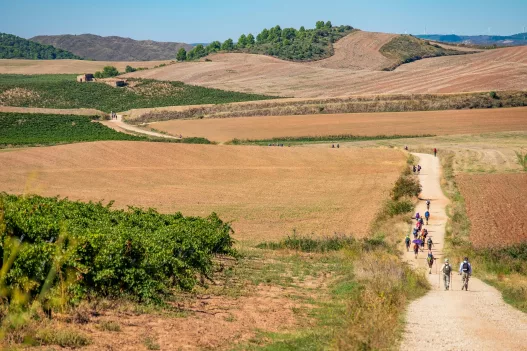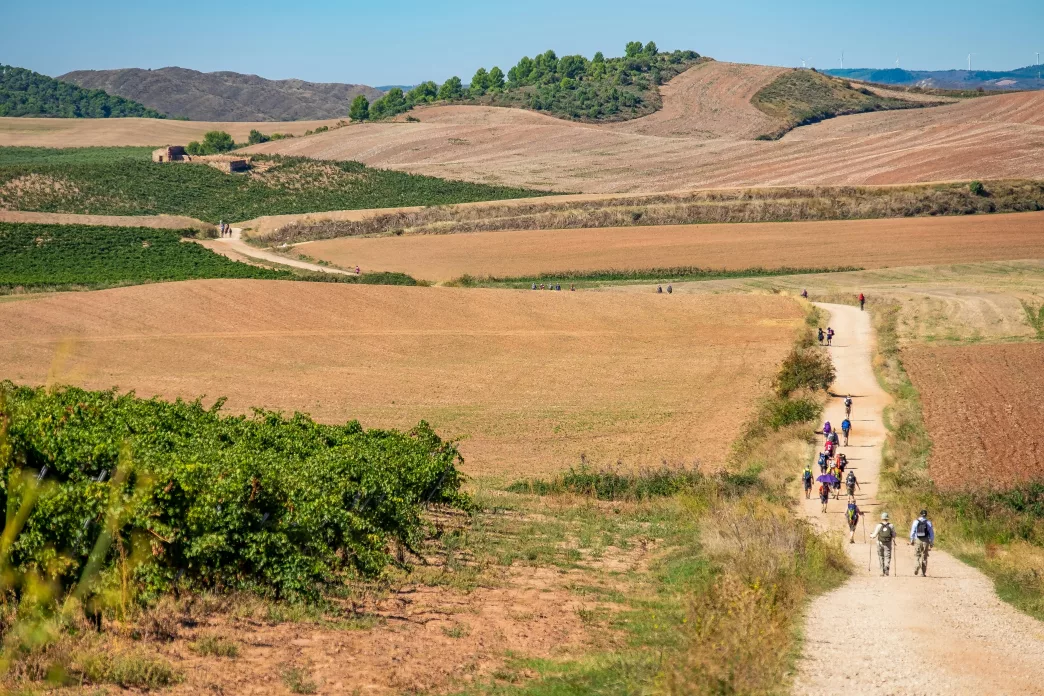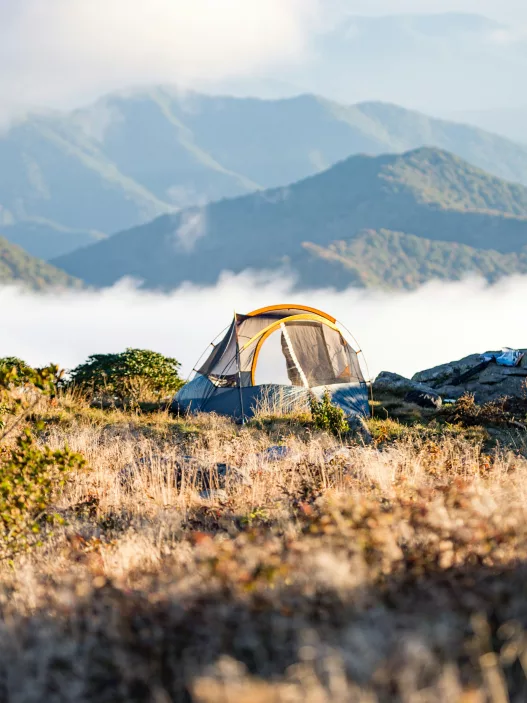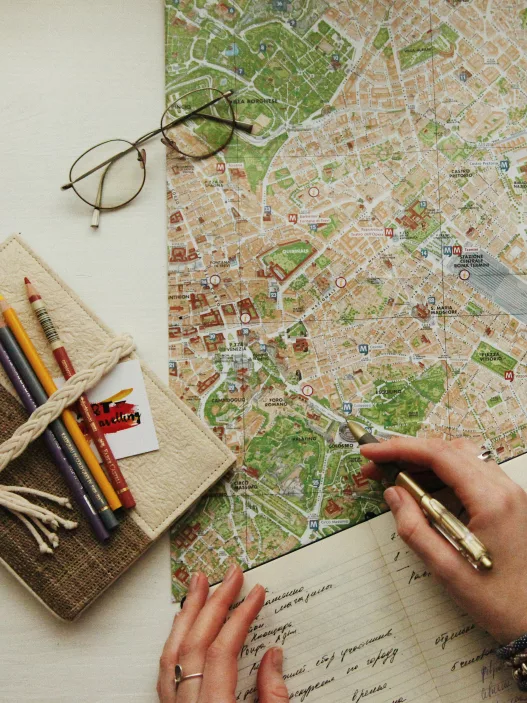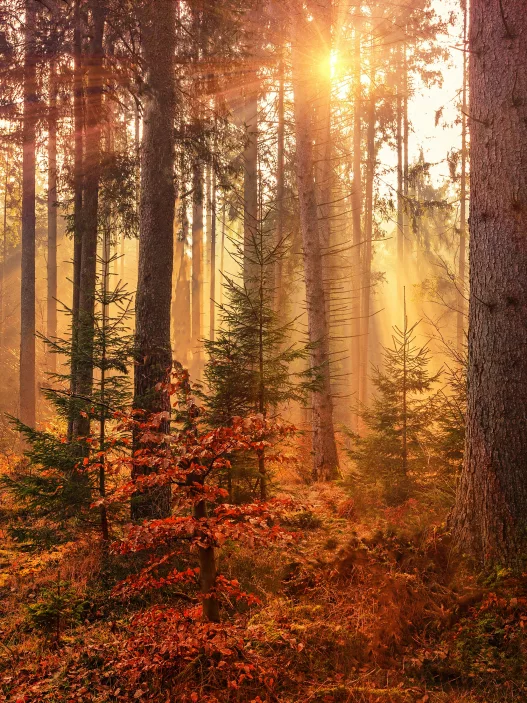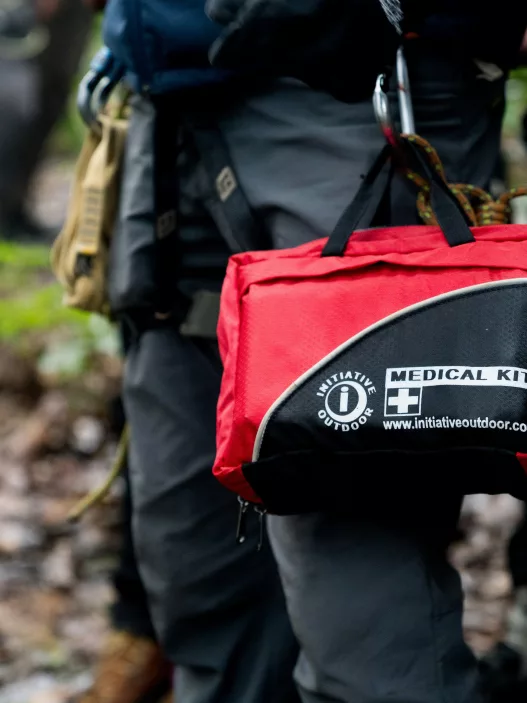The Camino de Santiago, an ancient pilgrimage route in Spain, attracts thousands of hikers each year. This journey offers not just physical challenge but also spiritual and cultural enrichment. This guide aims to provide essential information on planning and completing the Camino, ensuring hikers are well-prepared for a memorable experience.
With various routes to choose from, ranging in difficulty and length, individuals can find an option that suits their preferences and abilities. Along the way, they will encounter stunning landscapes, historic towns, and a welcoming community of fellow pilgrims. Understanding the unique aspects of the Camino can enhance their adventure and help them connect with its rich heritage.
Equipping oneself with reliable insights into accommodation, food, and necessary gear is crucial for a successful trek. From tips on managing daily distances to advice on embracing the cultural elements of the journey, this blog post offers practical guidance for adventurers seeking to embark on this famed path.
The History of Camino de Santiago
The Camino de Santiago, also known as the Way of St James, has deep historical roots. Its origins trace back to the 9th century, when the remains of Saint James, one of Jesus’ apostles, were believed to have been discovered in what is now Santiago de Compostela.
In the Middle Ages, the Camino became a significant pilgrimage route. It attracted travellers not only from Spain but across Europe. Pilgrims journeyed to Santiago for religious reasons, seeking penance, fulfilment of vows, or to seek healing.
The popularity of the Camino peaked in the 12th century. During this time, various routes began to develop, some originating in England, France, and Portugal. The Camino Francés emerged as the most popular path, with towns establishing accommodations to support pilgrims.
During the 16th century, the Reformation and changes in religious practices led to a decline in pilgrimage activity. Yet, interest rekindled in the 20th century, thanks to efforts by enthusiasts and organisations promoting the route.
Today, the Camino de Santiago is recognised as a UNESCO World Heritage site. It remains a cultural and spiritual journey, attracting thousands who wish to experience its historical significance.
Essential Planning Tips
Planning for the Camino de Santiago involves careful consideration of various factors. These include selecting the right route, timing the journey, budgeting appropriately, preparing a suitable packing list, and exploring accommodation options.
Choosing Your Route
The Camino de Santiago consists of multiple routes, each varying in length, difficulty, and scenery. The most popular is the Camino Francés, stretching approximately 800 kilometres from St Jean Pied de Port to Santiago de Compostela.
Other options include the Camino Portugués, which starts in Lisbon or Porto, and the Camino del Norte, which follows the northern coast of Spain.
Each route offers unique cultural experiences and landscapes. Research each path’s highlights, terrain, and available facilities to choose one that aligns with personal preferences and capabilities.
Determining the Best Time to Go
The ideal time for hiking the Camino is typically from April to October, during which the weather is generally mild.
Peak months like July and August attract larger crowds, especially on the Camino Francés. For those seeking quieter trails, consider travelling in April, May, or September.
Be aware of local festivals or events, as they can affect availability and prices.
Rain is more common in early spring and late autumn, so pack accordingly if hiking during these months.
Budgeting for the Journey
Budgeting effectively is crucial for any Camino journey. Costs can vary based on travel style, preferences, and the chosen route.
A rough estimate includes:
- Accommodation: €10-€30 per night for albergues (hostels).
- Meals: €10-€20 per day, depending on dining preferences.
- Transport: Consider travel to and from the starting and ending points.
Budget for miscellaneous expenses like souvenirs or occasional hotel stays for comfort. Flexibility in planning can help manage costs while allowing for unexpected expenses.
What to Pack
Packing light is essential. A well-prepared pack contributes to a more enjoyable experience.
Key packing items include:
- A lightweight backpack (40-50 litres)
- Comfortable hiking boots
- Breathable, moisture-wicking clothing
- Rain gear and sun protection (hat and sunscreen)
- Basic first aid supplies
Food items like energy bars and hydration systems are also useful.
A walking stick can offer support on uneven terrain. Limit personal items to essentials; a lighter pack makes for a more pleasant journey.
Accommodation Options
Accommodation along the Camino varies from albergues to hotels.
Albergues are the most affordable; they range from basic to more comfortable facilities, often catering specifically to pilgrims.
Booking options include:
- Municipal albergues: Budget-friendly and often located in convenient areas.
- Private albergues: Offer additional amenities, such as meals and private rooms.
- Hotels and guesthouses: Ideal for those seeking private accommodation.
Consider booking in advance during peak walking seasons or particularly popular routes. Staying in different types of accommodation allows for varied experiences throughout the journey.
Starting Your Pilgrimage
Preparation is essential for a successful start on the Camino de Santiago. Knowing how to reach the starting point and what to expect on the first day can ease the transition into this journey.
Getting to the Starting Point
Many pilgrims begin their journey in St Jean Pied de Port, France. This charming town serves as a popular starting point, offering various transport options.
Travel Options:
- Train: The closest station is in Bayonne, which connects to St Jean by bus.
- Bus: Regular buses run from major cities, including Bayonne and Pau.
- Car: Pilgrims can drive and park in St Jean, though parking spaces may be limited.
After reaching St Jean, visitors should check in at the local pilgrim office for their Pilgrim’s Passport. This document is essential for obtaining stamps along the route.
The First Day’s Expectations
The first day is often challenging, featuring a significant elevation gain as pilgrims ascend the Pyrenees. The trail can be steep and requires good fitness and proper footwear.
Key Points to Consider:
- Distance: The trek to Roncesvalles covers about 27 kilometres.
- Terrain: Expect varied terrain, from forest paths to rocky slopes.
It’s advisable to start early to avoid overheating and to enjoy the scenery. Along the way, pilgrims should stay hydrated and keep a steady pace. The day concludes with a sense of accomplishment as they reach Roncesvalles, ready for further adventures on the Camino.
Navigation and Safety
Navigating the Camino de Santiago requires attention to both wayfinding methods and personal safety measures. Pilgrims should be well-informed about the available resources and protocols to ensure a safe and enjoyable journey.
Following the Waymarks
The Camino is well-marked with a variety of waymarks. Pilgrims will encounter the iconic yellow arrows and scallop shell symbols indicating the route. It is essential to maintain awareness of these markers.
Along the path, there are signposts with distances to towns and next waymarks. Using a physical map or a GPS device can provide additional reassurance. Many hikers benefit from apps designed for the Camino, which can offer real-time navigation and tips.
Carrying a reliable map remains important, as not all sections have GPS signals. Frequent checks against established routes prevent unnecessary detours.
Staying Safe
Safety on the Camino involves several practices. Pilgrims should stick to well-trodden paths and avoid isolated areas, especially after dark.
Staying hydrated and nourished is vital, as the trek can be physically demanding. It’s advisable to travel with a companion and inform someone of the intended route if hiking alone.
Additionally, knowing personal limits is crucial. Taking regular breaks allows for better endurance and reduces the risk of injury. Pilgrims should also carry a basic first-aid kit to address minor injuries before they escalate.
Dealing with Emergencies
In the event of an emergency, having a plan is crucial. Pilgrims should know the locations of the nearest hospitals and local emergency numbers. In Spain, the emergency services can be contacted by dialling 112.
It’s also wise to have a mobile phone with important contacts stored. Inform fellow hikers about any medical conditions and carry necessary medications.
If faced with an injury or illness, resting and seeking help promptly is vital. Local Albergues can assist in finding medical care if needed. Understanding how to respond to common hazards, like slips or heat exhaustion, equips pilgrims to better handle unexpected situations.
Physical and Mental Preparation
Preparing for the Camino de Santiago involves both physical conditioning and mental fortitude. Achieving a balance between these aspects will enhance the hiking experience and ensure a successful journey.
Training for the Camino
Begin training at least three to six months before the hike. Focus on building endurance and strength through a mix of walking, hiking, and cross-training activities.
- Walking: Start with 30-minute daily walks, gradually increasing to 2-3 hours on weekends.
- Hiking: Incorporate varied terrain and elevation into training hikes to simulate Camino conditions.
- Cross-training: Activities like cycling, swimming, or yoga can improve overall fitness and flexibility.
Consider using a weighted backpack during training to adapt to the load carried during the hike. Also, pay attention to footwear. Invest in quality hiking boots and wear them during training to break them in and prevent blisters.
Mental Resilience Tips
Mental preparation is as critical as physical training. Hikers should cultivate resilience for the challenges ahead.
- Mindfulness: Practice mindfulness techniques to stay present and manage stress. Techniques such as deep breathing and meditation can be helpful.
- Positive Thinking: Develop a habit of maintaining a positive mindset. Visualising success can bolster confidence and motivation.
- Goal Setting: Set realistic daily goals to create a sense of accomplishment. Consider breaking down larger objectives into smaller, manageable tasks.
Joining a hiking group before the Camino may also help by providing social support and shared experiences. Establishing a routine during training can instil discipline and reinforce commitment to the journey.
Cultural Etiquette and Interaction
Navigating the cultural landscape along the Camino de Santiago requires awareness and respect for local customs. Understanding how to interact with residents can enhance the experience for both hikers and locals. Some key points include respecting local traditions and knowing how to effectively communicate with those encountered on the route.
Respecting Local Traditions
Pilgrims should observe and honour local customs that vary from region to region. For example, it is customary to greet locals with a polite “Hola” or “Buen Camino” when passing.
Participation in local festivals can also deepen cultural understanding. The Camino often intersects with various events, and joining in can foster connections.
Dining etiquette is crucial. When eating in local establishments, it is polite to wait for locals to be served first and to say “gracias” when leaving. Small gestures, such as trying to use the local language or sampling regional cuisine, demonstrate respect for the culture.
Communicating with Locals
Effective communication is key when interacting with locals along the Camino. While many Spaniards speak English, a basic understanding of Spanish phrases can go a long way. Simple phrases like “¿Dónde está…?” (Where is…?) or “Por favour” (Please) show willingness to engage.
Non-verbal communication also plays a significant role. Nod, smile, and make eye contact to convey friendliness.
When asking for directions or advice, it is best to be polite and patient. Locals appreciate when pilgrims listen and show interest in their stories. Engaging in small talk, even about the weather, can foster goodwill.
The Camino Experience
Walking the Camino de Santiago offers a unique blend of physical challenge, cultural immersion, and personal reflection. Pilgrims can expect a typical day filled with movement, savoury local dishes, and the opportunity to connect with fellow trekkers.
Typical Day on the Camino
A typical day on the Camino begins at dawn. Pilgrims often wake up early, packing their belongings before heading out for the day’s hike.
Morning walks can last several hours, providing stunning views of the Spanish countryside. Many choose to stop for breakfast at local cafés, enjoying fresh pastries and coffee.
Around midday, they often pause for a longer meal, recharging with traditional dishes. After several more hours of hiking, most will arrive at their chosen albergue (hostel) by late afternoon.
Evenings are usually a time for relaxation, with communal dinners being a popular option where stories and laughter flow freely among pilgrims.
Cuisine and Gastronomy
The culinary landscape along the Camino is diverse and vibrant. Each region offers unique specialities, reflecting local traditions and ingredients.
Common items on the menu include tortilla española (Spanish omelette), pulpo a la gallega (Galician octopus), and scrumptious pastries like tarta de Santiago.
Local wines, especially from regions like La Rioja, complement meals perfectly. Pilgrims often find markets and grocery stores where they can buy fresh produce, cheese, and bread for picnics.
Dining is often communal, enhancing the social aspect of the journey. Sharing meals allows pilgrims to learn about one another’s backgrounds and stories, enriching their Camino experience.
Socialising with Fellow Pilgrims
The Camino is as much about connection as it is about the journey. Pilgrims frequently find themselves sharing paths with fellow travellers from all over the world.
Shared experiences foster camaraderie, often leading to friendships that last beyond the trail. Many pilgrims engage in conversations about their reasons for walking the Camino, creating an atmosphere of openness.
Albergues provide further opportunities for social interaction. Group meals and communal spaces encourage guests to mingle.
Some pilgrims attend organised events or participate in local traditions, deepening their understanding of Spanish culture while forming lasting bonds.
Post-Camino Reflections
Completing the Camino de Santiago is a transformative experience. Many hikers find themselves reflecting on their journey and considering how it influences their lives once they return home. Understanding these reflections can enhance personal growth.
Processing the Journey
Post-Camino, individuals often grapple with profound insights gained during their trek. They may recall moments of solitude, connection, and physical challenges, recognising how these factors shaped their perspectives.
Maintaining a journal can help articulate these reflections. Writing about experiences allows for deeper processing. Including thoughts on personal achievements or pivotal encounters can clarify lessons learned.
Engaging in group discussions with fellow pilgrims also proves beneficial. Sharing experiences fosters a sense of community and reinforces the bonds formed along the way. Participants can offer diverse viewpoints, enriching one another’s understanding of the journey.
Continuing the Camino Journey at Home
Integrating lessons from the Camino into daily life is crucial. Individuals might set specific goals inspired by their journey, such as committing to regular hiking or embracing a more mindful lifestyle.
Creating a routine that honours the simplicity experienced on the Camino encourages sustainability. Regular walking, meditation, or connecting with nature can invoke similar feelings of peace.
Additionally, building connections with local walking groups or engaging with online Camino communities helps maintain that spirit. These spaces allow for ongoing support and shared experiences, keeping the journey alive long after returning home.


